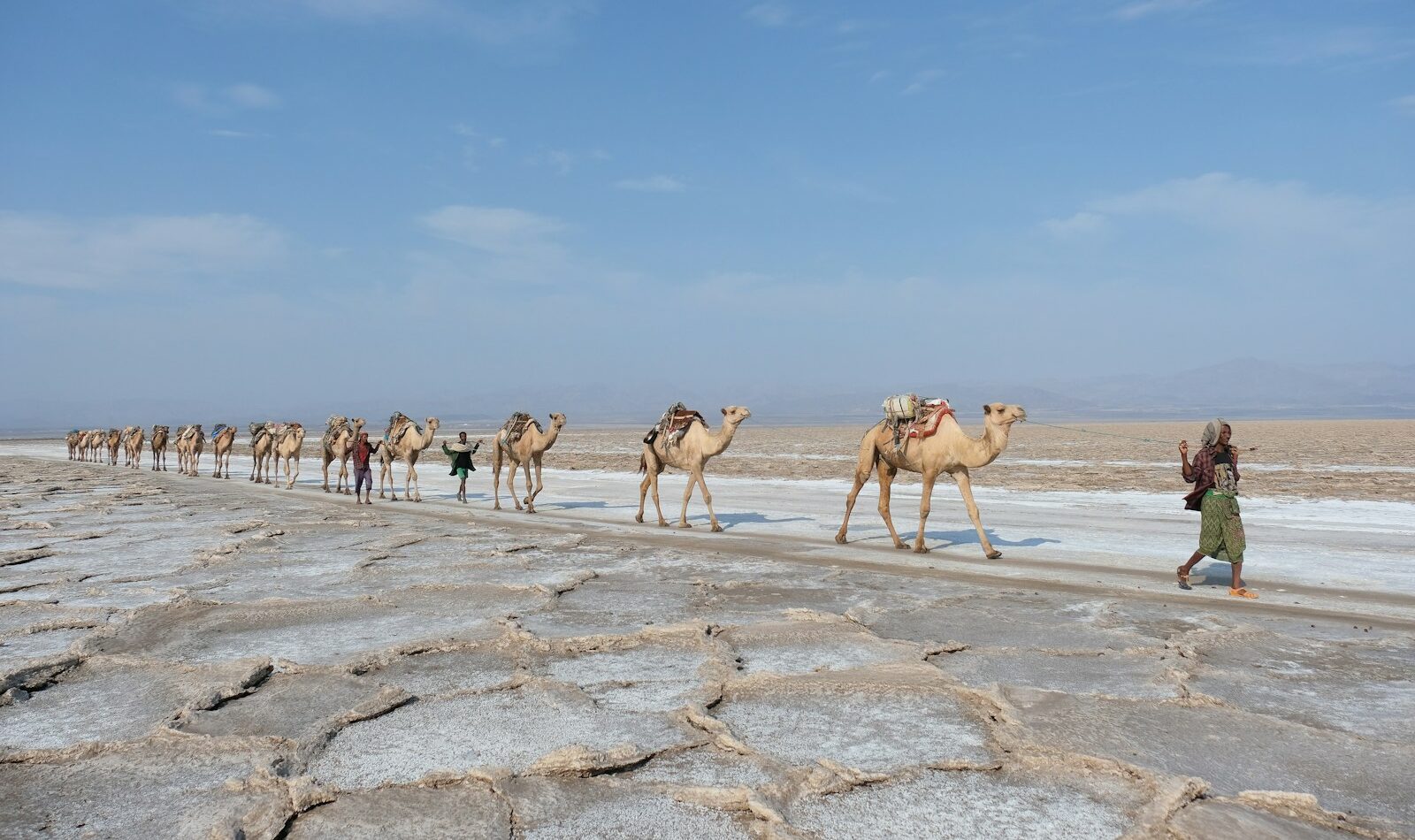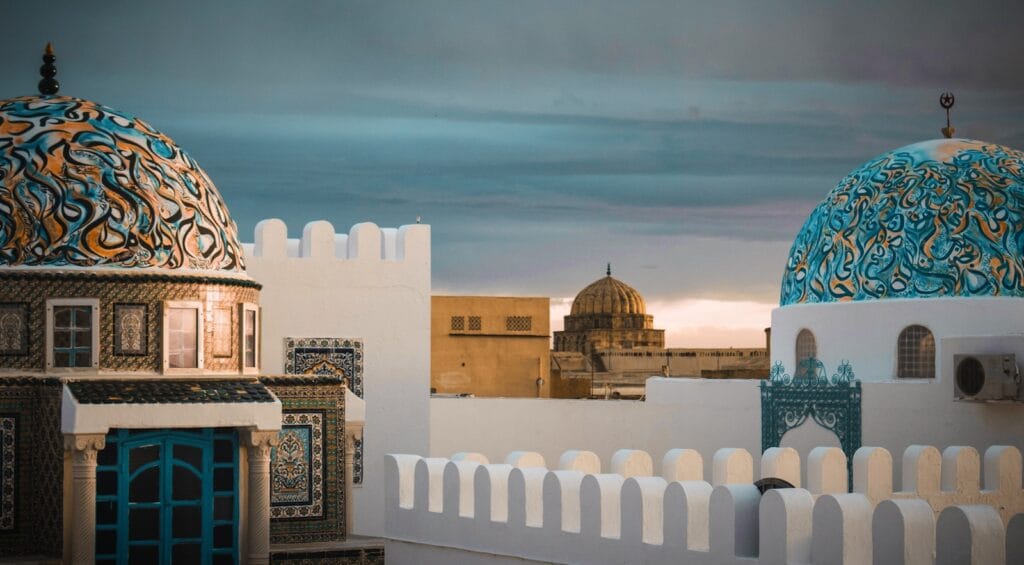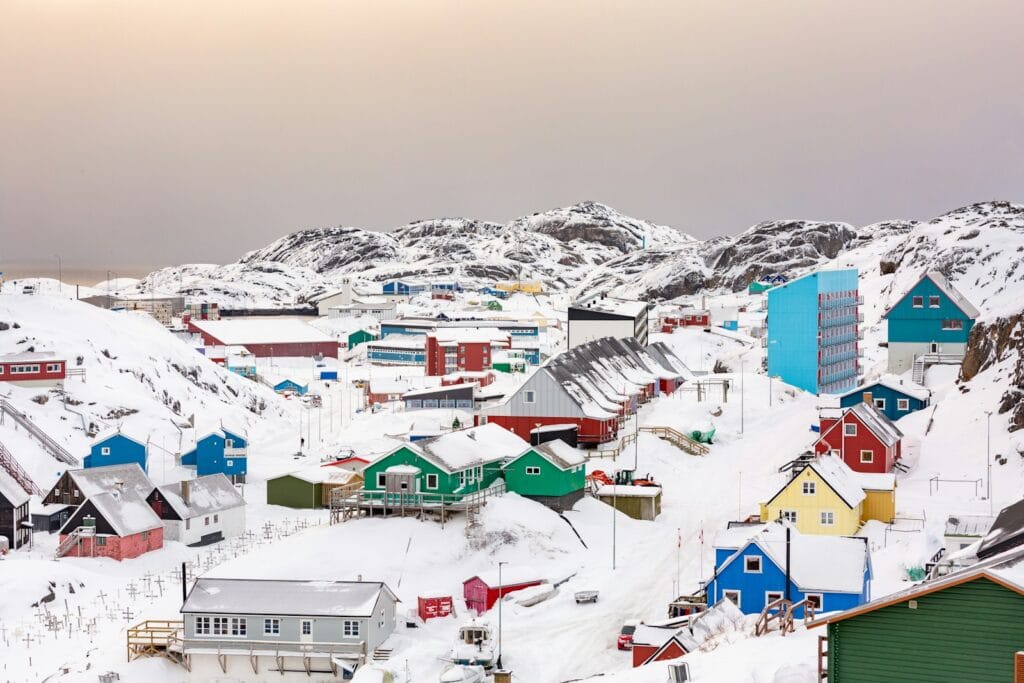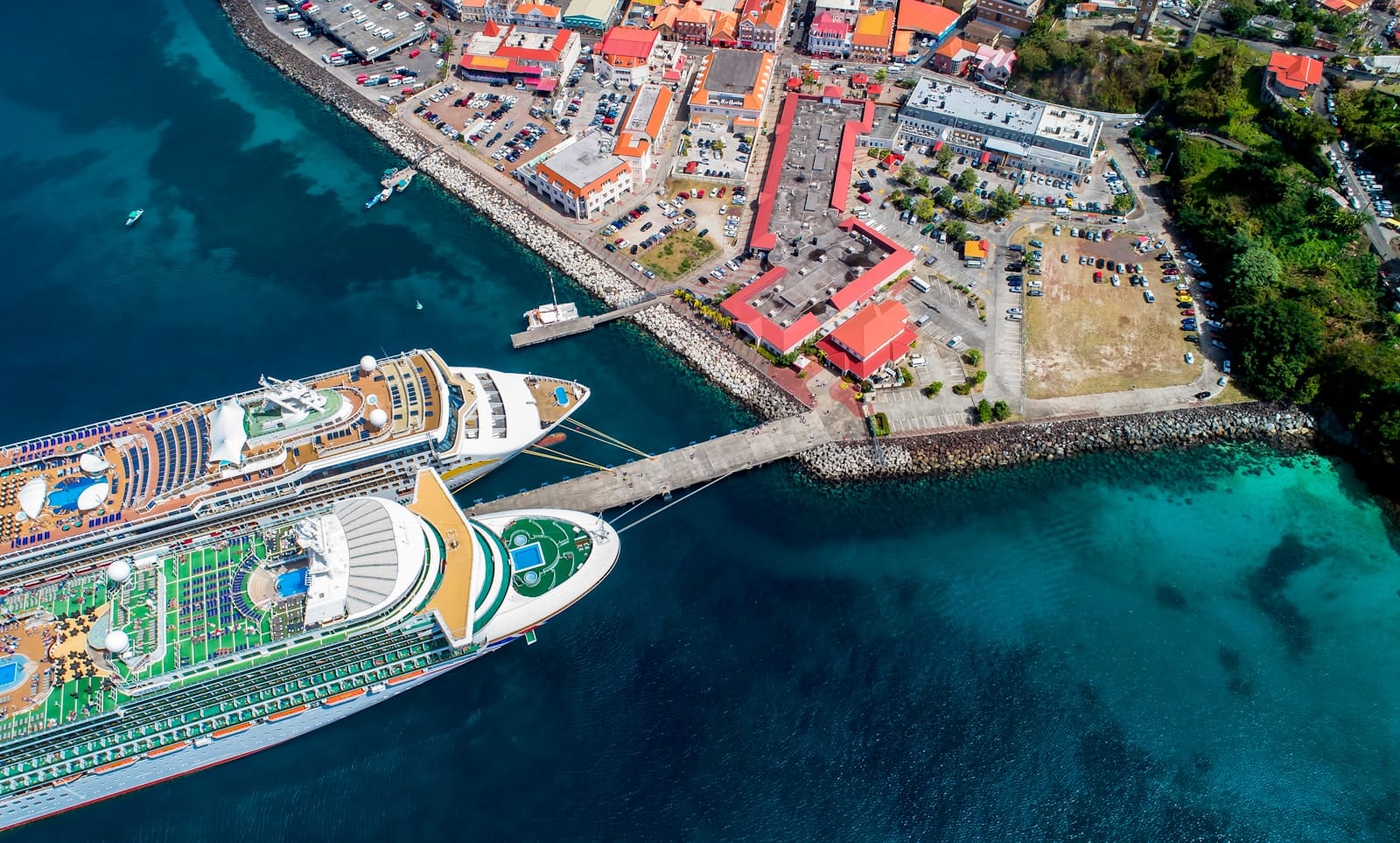Ethiopia Travel Guide: Ancient Legends & High-Altitude Beauty
Intro to Ethiopia Travel Guide
Ethiopia is unlike anywhere else — a land of rock-hewn churches, jagged highlands, tribal traditions, and ancient empires. From the peaks of the Simien Mountains to the fiery Danakil Depression, and the historic cities of Lalibela and Axum, Ethiopia delivers cultural richness, raw adventure, and untold stories waiting to be discovered.
Start planning your journey with our complete Ethiopia Travel Guide — your trusted resource for exploring one of Africa’s most storied and striking destinations.
Where to Go in Ethiopia
Addis Ababa | Axum | Bahir Dar | Dire Dawa | Gambela | Harar | Lalibela | Mekelle | Semien Mountains National Park | Shashemene | Tigray Region
💡Quick Facts:
Destination: Ethiopia
Continent: Africa
Country: Ethiopia (Country)
Administrative Divisions: 11 regional states (including Tigray, Oromia, Amhara, Somali, Afar, Sidama) and 2 chartered cities (Addis Ababa, Dire Dawa)
Area: 1,104,300 km²
Population: ~126 million
Density: ~114 people/km²
Capital: Addis Ababa
Regions/Subregions: Horn of Africa, Great Rift Valley, Ethiopian Highlands, Afar Depression
Official & Regional Languages: Amharic (official); Oromo, Tigrinya, Somali, Afar, and over 80 others regionally recognized
Currency: Ethiopian Birr (ETB)
Time Zone(s): East Africa Time (UTC+3); Ethiopia uses a unique 12-hour clock system locally
Airports:
– Addis Ababa Bole International Airport (ADD) – main hub
– Dire Dawa International Airport (DIR), Mekelle (MQX), Bahir Dar (BJR), Lalibela (LLI), and Gondar (GDQ) serve domestic and some regional routes
Climate: Tropical monsoon and highland climate; temperate in highlands, arid in lowlands
Known For: Simien Mountains (UNESCO), Lalibela rock-hewn churches, ancient Aksumite ruins, Omo Valley tribes, Blue Nile Falls, Danakil Depression, coffee origin, Ethiopia Airlines, Lucy fossil site
🛂Arrival Info:
– Most nationalities can apply online for an eVisa or obtain a visa on arrival (Addis Ababa only)
– Standard tourist visa: single-entry for 30 or 90 days
– East African Tourist Visa available (joint with Rwanda and Kenya)
– Passport must be valid 6+ months with at least 1 blank page
– Visa portal
💉Health Info:
– Recommended vaccines: Yellow fever (if arriving from endemic areas), Hepatitis A & B, Typhoid, Rabies (for long stays), and Malaria prophylaxis for lowland regions
– Health system concentrated in major cities; Addis Ababa has the best facilities
– Malaria risk in western lowlands and southern border regions
– Visit Ministry of Health – Ethiopia for updates
✅ Check travel insurance options for travel emergencies, delays, and medical needs abroad — Get coverage here
✅ Stay Informed with Official Updates: WHO – International Travel & Health | CDC – Travel health updates
🚨Travel Advisory:
– Some regions have safety alerts due to conflict or unrest (Tigray, parts of Amhara, Oromia)
– Caution in border areas with Eritrea, Somalia, and South Sudan
✅ Stay Informed with Official Updates: US Travel Advisory | UK Foreign Travel Advice
📅Holidays:
– Timket (Epiphany) – Jan 19: Colorful Orthodox Christian celebration
– Enkutatash – Sep 11: Ethiopian New Year
– Meskel – Sep 27: Festival of the True Cross
– Eid al-Fitr and Eid al-Adha – Dates vary by Islamic calendar
– Genna – Jan 7: Ethiopian Orthodox Christmas
💰Visitor Info:
– Currency: Ethiopian Birr (ETB); cash is essential outside cities
– ATMs in Addis Ababa; limited in rural areas
– Credit cards accepted in top hotels; carry cash for daily use
– Tipping: 10% common in restaurants and hotels
– Duty-free allowance: 1L alcohol, 200 cigarettes
Daily Budget:
– Budget: $25–$40
– Midrange: $50–$90
– Luxury: $100+
✈️Airports:
– Addis Ababa Bole International Airport (ADD): Main hub, served by Ethiopian Airlines with connections across Africa, Europe, and Asia.
– Secondary airports: Mekelle (MQX), Bahir Dar (BJR), Gondar (GDQ), Lalibela (LLI), Dire Dawa (DIR)
✅ Delayed or canceled flight? Check if you’re eligible for compensation
🚍Transport:
– Local: Minibuses, Bajaj (tuk-tuks), taxis in cities; negotiate fares
– Intercity: Public buses (Selam, Skybus), domestic flights via Ethiopian Airlines
– Ride-hailing apps like Ride Ethiopia work in Addis Ababa
– Driving is on the right; IDP recommended; road conditions vary widely
– Rail: Addis Ababa–Djibouti electric railway (freight and limited passenger use)
✅ Book reliable airport transfers and in-city rides in advance. Reserve your ride here
📶Connectivity:
– SIMs: Ethio Telecom is the sole provider; tourist SIMs available at the airport
– eSIM: Supported via Airalo or aloSIM
– 3G/4G available in major cities; coverage weak in remote areas
– Public Wi-Fi rare; hotels often offer basic access
✅ Stay connected abroad with affordable eSIM data packs. Get your eSIM here
📜Laws & Etiquette:
– Alcohol legal; drinking age is 18; avoid public intoxication
– Smoking restricted in public areas
– Dress conservatively outside Addis; modest clothing at religious sites
– Homosexuality is illegal; LGBTQ+ travelers should exercise discretion
– Greet with a handshake or right-hand gestures; respect elders and religious customs
– Avoid photographing military, police, or airports without permission
🛡️Emergency Info:
– Emergency: Police 991, Ambulance 907, Fire 939
– U.S. Embassy: Addis Ababa
– UK Embassy
– Red Cross: +251 11 515 0547
– Crisis hotline: Provided during unrest via embassies or news channels
✅ Use embassy locator tools: Embassies Worldwide
🌦️Weather:
– Highlands: Mild year-round; wet season June–Sept
– Lowlands: Hot and arid; best visited Nov–Feb
– Avoid travel during peak rains (July–August)
– Best time to visit: October to February for festivals and clear skies
✅ Stay prepared—check the weather forecast for your destination — Weather Forecast
Ethiopia by Region – Where to Go
Ethiopia’s regions reveal deep historical, ecological, and cultural contrasts, offering travel experiences few countries can match.
Addis Ababa & Central Ethiopia
Addis Ababa
The capital is a sprawling, high-altitude city full of museums, nightlife, and modern Ethiopian culture. Visit the National Museum (home to Lucy), Ethnological Museum, and Merkato — one of Africa’s largest markets.
Debre Libanos & Blue Nile Gorge
A stunning 13th-century monastery perched above dramatic cliffs. Often visited as a day trip from Addis.
Lake Ziway & Bishoftu
Crater lakes and birdlife-rich getaways just a few hours south of the capital.
Northern Ethiopia – History and Highlands
Lalibela
Famous for its 12th-century rock-hewn churches, this UNESCO World Heritage Site is often called the “New Jerusalem.”
Gondar
Known for medieval castles, royal baths, and the annual Timket Festival celebrating Epiphany.
Axum
The spiritual center of Ethiopia’s Orthodox Church and rumored resting place of the Ark of the Covenant.
Simien Mountains National Park
Soaring peaks, dramatic cliffs, and gelada monkeys. Ideal for trekking and scenic views.
Lake Tana & Bahir Dar
The source of the Blue Nile, home to island monasteries and traditional papyrus boats.
Southern Ethiopia – Tribal Cultures and Rift Valley Beauty
Omo Valley
A remote and culturally rich region, home to diverse ethnic groups like the Mursi, Hamar, and Karo. Best explored with a guide.
Arba Minch
Overlooking twin lakes and the Nechisar plains, this is a gateway to both cultural and wildlife experiences.
Konso
UNESCO-listed terraced hills and one of Ethiopia’s most environmentally adapted communities.
Lake Awassa & Shashemene
Laid-back towns with vibrant markets and links to the Rastafarian diaspora.
Eastern Ethiopia – Desert, Islam, and Ancient Walls
Harar
A walled Islamic city of alleyways, shrines, and color. Known for its night-time hyena feedings and UNESCO cultural status.
Dire Dawa
A historic railway town with faded colonial charm and bustling markets.
Afar & Danakil Depression
One of the hottest and most surreal places on Earth — colorful sulfur springs, salt caravans, and lava lakes near Erta Ale volcano.
Top Places to Visit in Ethiopia
From biblical legends to tribal rituals and epic landscapes, these highlights showcase Ethiopia’s diversity.
Cultural Capitals
Addis Ababa
Modern culture, coffee shops, and political pulse. Great base for art, music, and contemporary cuisine.
Lalibela
Walk barefoot through monolithic churches carved into red volcanic stone.
Harar
Fourth-holiest city in Islam, packed with shrines, markets, and centuries-old alleyways.
Nature Escapes
Simien Mountains
Trek along dramatic escarpments, spot endemic geladas, and camp under starlit skies.
Lake Langano & Rift Valley Lakes
Swim in volcanic lakes, birdwatch, and unwind in eco-lodges.
Bale Mountains
Less-visited highlands with wolves, waterfalls, and cloud forests.
Historic & Spiritual Sites
Axum’s Obelisks
Towering granite monuments and ruins of ancient emperors.
Gondar Castles
Explore Ethiopia’s “Camelot” — a royal compound of stone castles and churches.
Tana Monasteries
Sail across Lake Tana to find centuries-old paintings and relics tucked away in island monasteries.
Mountains and Volcanic Landscapes
Erta Ale Volcano
One of the world’s few continuously active lava lakes. Requires a multi-day trek in the Danakil.
Simien Escarpment
Africa’s answer to the Grand Canyon, filled with dramatic vistas and endemic wildlife.
Sof Omar Cave
A mystical limestone cave complex carved by the Web River in southeastern Ethiopia.
How to Choose Where to Go in Ethiopia
Here’s how to match Ethiopia’s regions with your travel style:
For History and Architecture
Focus on the Northern Historical Route — Lalibela, Gondar, Axum, Bahir Dar.
For Trekking and Landscapes
Trek the Simien or Bale Mountains. For extremes, venture into the Danakil.
For Tribal and Cultural Encounters
Visit the Omo Valley and Konso in the south. Go with ethical, locally guided tours.
For Spiritual Travel
Visit monasteries on Lake Tana, the Ark traditions in Axum, and pilgrimage sites near Lalibela.
For Urban and Contemporary Vibes
Stay in Addis Ababa for live music, art spaces, and dynamic local culture.
How to Get Around Ethiopia
Traveling in Ethiopia can be rugged but rewarding. Choose based on your route and comfort level.
- Domestic Flights
Efficient and affordable via Ethiopian Airlines, which offers discounts for international ticket holders. Ideal for long distances (Addis to Lalibela or Gondar). - Minibuses & Buses
Extensive but slow and crowded. Suitable for budget travel between major towns. - Private Drivers & Tours
Popular for the Omo Valley, Danakil, and remote regions. Best for flexibility and cultural sensitivity. - Ride-Hailing in Addis
Use Ride or Feres taxi apps. Local taxis are common but negotiate rates upfront. - 4×4 Rentals
Essential for Danakil and southern circuits. Usually rented with a driver.
Travel Budget & Costs in Ethiopia
Ethiopia offers great value, especially for historical and cultural travel. However, remote adventures can increase costs.
Budget Travel ($30–$60/day):
- Local hotels or guesthouses: $10–$25
- Street food and local restaurants: $2–$5 per meal
- Buses and minibuses: $1–$10 per route
- Museum and site entry: typically under $5
Mid-Range Travel ($80–$150/day):
- Boutique hotels or heritage lodges: $60–$100
- Domestic flights: $40–$90 per route with Ethiopian Airlines discount
- Private drivers or short tours: $60–$100 per day
- Full-day excursions to places like Lake Tana or Simien Mountains
Luxury Travel ($200–$500+/day):
- High-end eco-lodges or exclusive Danakil treks
- Customized itineraries with guides and drivers
- Charter flights or luxury camps near Lalibela or Omo Valley
Money-Saving Tips:
- Use Ethiopian Airlines for all flights to access fare discounts
- Travel in shoulder months (March or October) for lower accommodation rates
- Join group tours to remote areas to share costs
- Eat at local eateries and buy entrance tickets directly at sites
Best Time to Visit Ethiopia
Ethiopia’s climate varies by altitude, but travel is possible year-round with the right planning.
Dry Season (October–March)
This is the best time to visit Ethiopia — clear skies, green landscapes after the rains, and excellent festival season.
Top picks: Timket Festival (January), Simien treks, Historical Route exploration
Rainy Season (June–September)
Heavy rains in the highlands may hinder road travel, but it’s quieter and lush. Bale and southern regions remain accessible.
Top picks: Omo Valley and cultural travel in the south
Shoulder Months (April–May, September)
Lower tourist numbers, pleasant weather, and lower prices. Ideal for avoiding crowds and enjoying the scenery.
Must-See Experiences in Ethiopia
From spiritual pilgrimages to surreal volcanic treks, these are the top things to do in Ethiopia.
Cultural and Spiritual
Lalibela Rock Churches
Walk barefoot into hand-carved sanctuaries still used for worship. Attend early morning mass for a moving experience.
Hyena Feeding in Harar
Witness locals calling wild hyenas by name — a unique tradition passed down generations.
Epiphany Festival (Timket)
Held across Ethiopia in January, featuring processions, priests, and water blessings.
Konso Stone Pillars and Terraces
Explore an ancient society’s engineering marvels and sacred burial stones.
Nature and Adventure
Trek in Simien Mountains
Watch herds of gelada monkeys, spot walia ibex, and camp along cliffside trails.
Explore Danakil Depression
Venture into a geothermal wonderland — acid pools, salt flats, and glowing lava.
Climb Mount Abuna Yosef
One of Ethiopia’s highest peaks near Lalibela, with sweeping views and highland wildlife.
Daily Life and Markets
Merkato in Addis Ababa
Wander one of Africa’s largest open-air markets for textiles, spices, and electronics.
Coffee Ceremony
Experience Ethiopia’s beloved tradition: fresh-roasted beans, incense, and three rounds of coffee.
Local Music at Fendika
Catch traditional Azmari performances blended with jazz and modern beats.
Book immersive Ethiopia tours and experience unforgettable things to do in Ethiopia — from rock-hewn churches and lava lakes to tribal rituals and highland hikes.
Best Travel Itineraries in Ethiopia
Here are sample routes to help structure your trip.
7-Day Historical Circuit
Day 1: Addis Ababa arrival
Day 2–3: Fly to Lalibela, visit churches
Day 4: Fly to Gondar, explore castles and churches
Day 5: Day trip to Simien Mountains
Day 6: Bahir Dar and Lake Tana monasteries
Day 7: Return to Addis
Perfect for history lovers and first-time visitors.
10-Day South & Culture Route
Day 1–2: Addis Ababa and Rift Valley Lakes
Day 3–5: Arba Minch and Dorze villages
Day 6–7: Omo Valley tribes
Day 8: Konso
Day 9–10: Return via Awassa and coffee stops
Ideal for culture seekers and photographers.
14-Day Grand Ethiopia
Day 1–2: Addis Ababa
Day 3–6: Northern Route (Axum, Lalibela, Gondar)
Day 7–8: Simien Mountains trek
Day 9–10: Bahir Dar
Day 11–14: Danakil Depression expedition
Full immersion for adventurous travelers.
Local Cuisine & Culinary Experiences
Ethiopian food is vibrant, communal, and spiced with culture.
Must-Try Dishes
Injera
Sourdough flatbread made from teff. Used as both plate and utensil.
Doro Wat
Spicy chicken stew with boiled eggs, often served on holidays.
Shiro
Savory chickpea puree — a common vegetarian dish.
Tibs
Fried meat (often beef or lamb) with spices and vegetables.
Kitfo
Minced raw or lightly cooked beef seasoned with chili and butter.
Culinary Experiences
- Attend a traditional coffee ceremony
- Visit a tej bet to sample honey wine
- Take a cooking class in Lalibela or Addis
- Eat at a fasting restaurant during Lent or other religious periods for vegan variations
Taste your way through Ethiopia with spice-laden stews, communal platters, and deep coffee traditions.
Travel Safety & Cultural Etiquette in Ethiopia
Ethiopia is generally safe, but regional differences and political tensions mean smart travel planning is essential.
Safety Tips
- Check local news and government advisories before visiting border areas
- Danakil and Omo regions require reliable guides and permits
- Avoid traveling at night, especially on rural roads
- Secure valuables and avoid displaying wealth
- Medical care is limited outside cities — travel with basic supplies
Cultural Etiquette
- Remove shoes before entering churches or homes
- Ask permission before photographing people or religious sites
- Dress modestly, especially in rural and religious areas
- Greet elders and hosts respectfully — handshakes are common
- Accepting food or drink is considered polite
Where to Go Next – Pair Ethiopia with These Destinations
Ethiopia connects well with other East African and Red Sea neighbors for an extended journey.
- Kenya Wild & Free
Fly to Nairobi for safari adventures in the Masai Mara or coastal trips to Lamu. - Zanzibar Island Escape
Fly from Addis Ababa to Zanzibar for a relaxing break on white-sand beaches, spice tours, and the cultural maze of historic Stone Town — a perfect complement to Ethiopia’s highlands. - Seychelles Paradise Shores
Combine Ethiopia’s cultural depth with a tropical escape in the Seychelles — ideal for snorkeling, island-hopping, and world-class beaches just a short flight away via Nairobi or Addis. - Uganda Jungle Journeys
Add gorilla trekking and lake-side retreats to contrast Ethiopia’s highlands.
Final Planning Checklist for Ethiopia
Use this practical list to prepare for your trip:
- Book domestic flights early for best routes and fares
- Confirm Danakil or Omo tours with trusted local operators
- Get eVisa or visa on arrival (check latest requirements)
- Bring warm clothes — highlands can be cold year-round
- Download offline maps and Amharic translation apps
- Carry cash — cards rarely accepted outside Addis
- Pack water purification tablets and basic meds
- Respect fasting periods and local religious customs
- Travel insurance with evacuation coverage recommended
- Back up documents and contact details digitally
Explore Ethiopia with confidence using our trusted tips, local insights, and region-by-region planning tools.
For more expert travel tips, practical strategies, and trusted tools — visit our Homepage and get inspired for your next trip.









